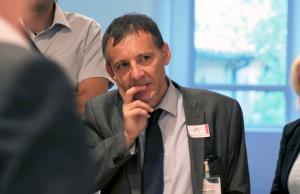Throughout the summer holidays and well into October 2014, JET ran a series of experiments with deuterium plasmas, focusing on developing ITER-relevant plasma scenarios and addressing important ITER issues such as disruption mitigation and runaway electrons.
The machine is now shut down and will restart in May 2015 to resume its scientific campaign in September with a refurbished ITER-like ion cyclotron resonance heating antenna and an optimized pellet injector (frozen deuterium pellets are injected into the plasma to mitigate instabilities known as
ELMs).
The "real thing" —implementing the actual fusion fuels deuterium and tritium—will only begin when all machine components have been commissioned, the operating scenario developed at full fusion performance, staff trained, safety measures checked and diagnostics systems adjusted. This will take the better part of two years.
JET has changed a lot in 20 years, becoming more and more like ITER, and so has the world of fusion research. Fuelled by conceptual advances and the feedback from dozens of fusion machines, considerable progress has been made in understanding plasma behaviour and new "scenarios" have been developed, leading to better sustained plasma performance. (JET is collectively used by more than 350 scientists and engineers from all over Europe.)
"We want to demonstrate that what we have observed with deuterium plasmas can be extrapolated to DT," says Litaudon. "We will be operating JET as if it were ITER. In that early phase, plasma current (~4 MA) and magnetic field (~4 Tesla) parameters will be comparable in both machines..."
JET is the only operating machine licenced for tritium but it is not totally "ITER-like." Its smaller plasma volume (~ 100 m3 as compared to ITER's 840 m3) will limit fusion performance and its conventional (non-superconducting) coils and the fact that both its wall and divertor are not actively cooled will impact the duration of the plasma shots.
However, the feedback from DT experiments in JET will be decisive for validating the ITER scenarios and readying the young generation of engineers and scientists for ITER operation. "It's a matter of time and money," says Xavier Litaudon. "If we gain one year on the learning curve, ITER can save a few hundred million euros..."
(1) The JET Exploitation Manager, Lorne Horton, assisted by the JET Exploitation Unit, is responsible for implementing the JET operation contract on behalf of the Commission, including overseeing JET operation and ensuring consistency with the Fusion Roadmap.


